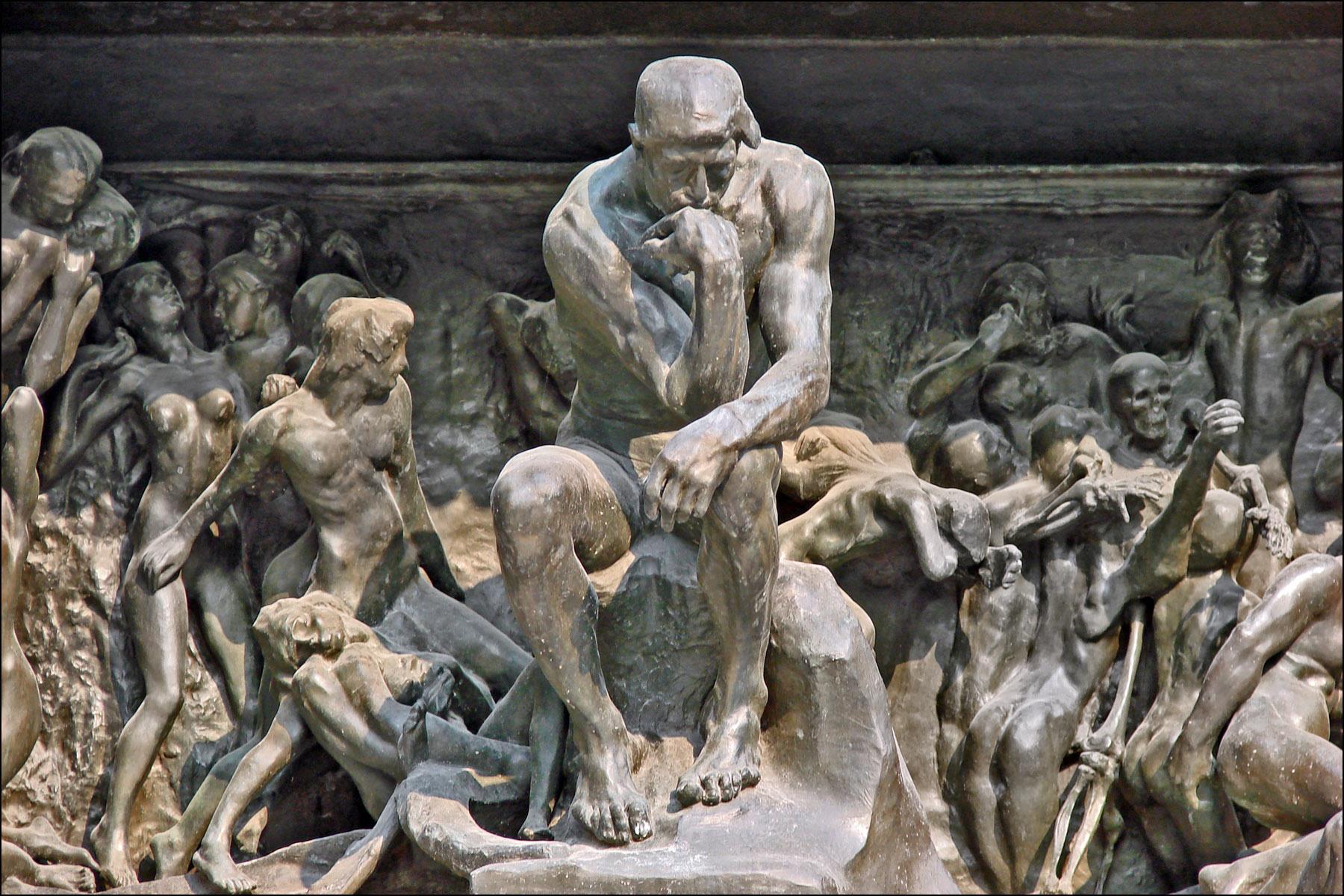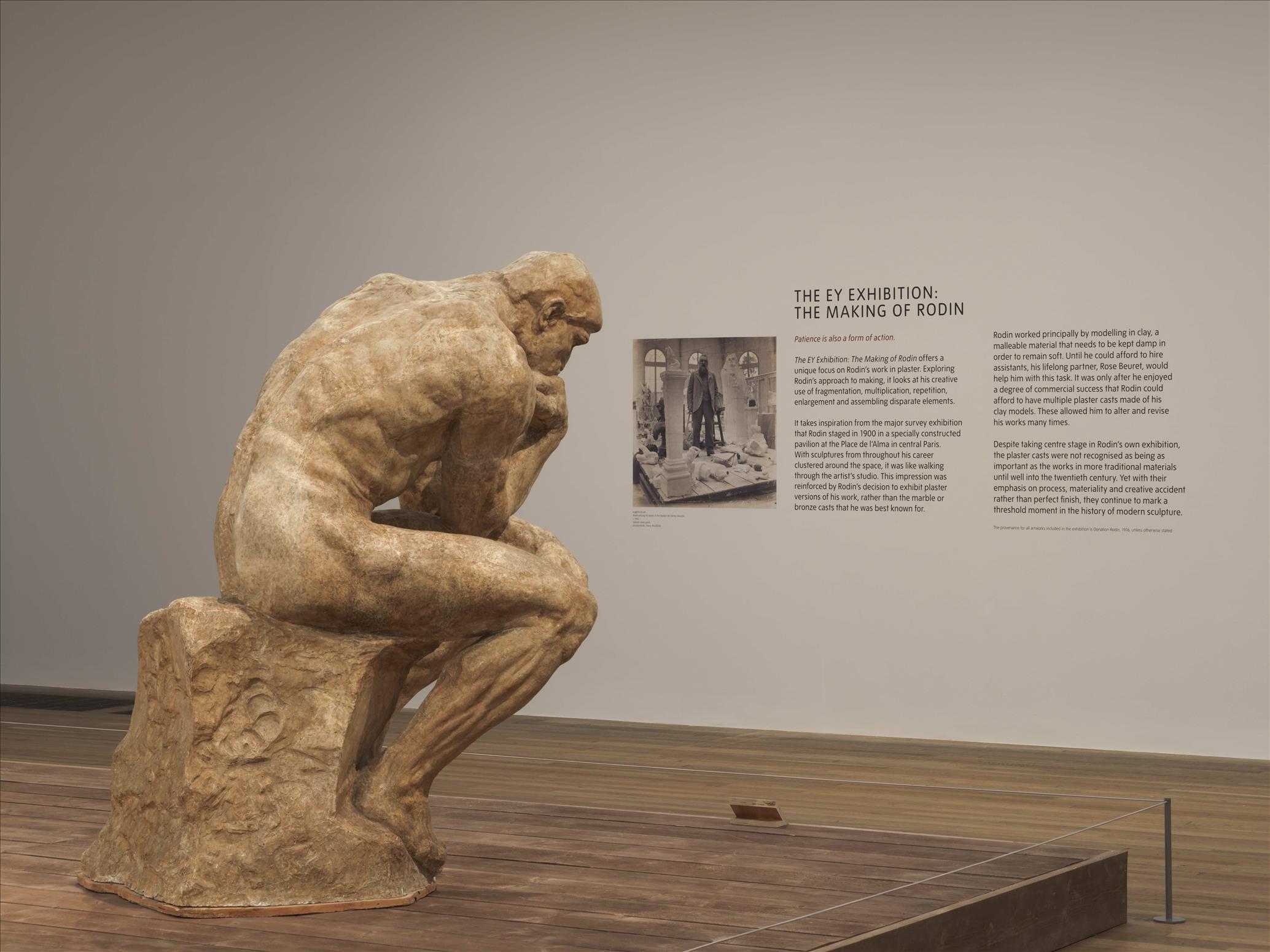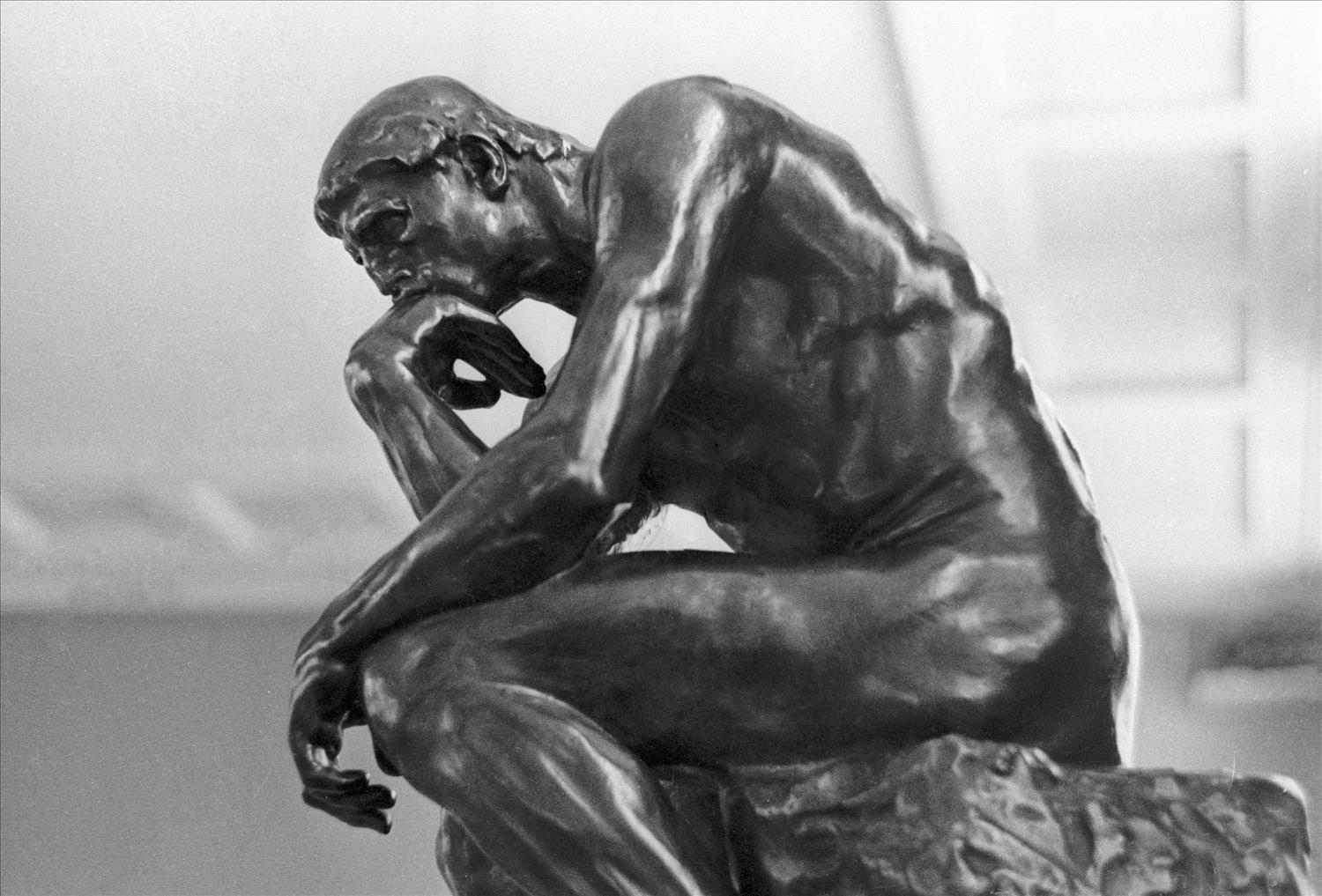
Why this Rodin scholar would gladly see the back of The Thinker
(MENAFN- The Conversation) I'm a Rodin scholar with a secret: I don't like The Thinker. I've always been vexed by the fame of this sculpture by French artist Auguste Rodin (1840-1917) of a hyper-muscular man lost in thought.
It wears a red“Make America Great Again” cap in a New Yorker cartoon. Speaking in a thick New York accent, it flirts with a dainty marble sculpture by flexing its biceps in Night at the Museum II . Banksy's version sits in a drunken stupor with a traffic cone on its head.
Even the Tate Modern's new breathtaking exhibition, The Making of Rodin , cannot dim The Thinker's in-your-face machismo. The colossal plaster version in the main room“manspreads” into the visitor's view and space.
Why did The Thinker (1880) become so popular? And what is it about this sculpture that makes me so uncomfortable?
Masculine ThinkerThe original Thinker sits atop Rodin's most important sculpture, The Gates of Hell (1880-1917), originally intended to serve as the main entrance for a museum of the decorative arts. Inspired by Dante's Inferno, a medieval poem that saw the author taken by the Ancient Roman poet Virgil on a tour of the nine circles of hell, Rodin's monumental set of doors shows the tormented bodies of the damned. The Thinker, probably conceived as Dante or Minos, looms over its fellow figures, seeming to conjure the suffering that takes place around it.
At the time of its creation, the male body was an object of intense focus in France. The weakness of its male citizens was seen as one of the causes of the country's humiliating defeat in the Franco-Prussian War of 1870-71.

The Thinker in The Gates of Hell at the Musée Rodin, France. Jean-Pierre Dalbéra , CC BY-SA
The French government feared the population's ongoing degeneration, while medical treatises described the symptoms: hysteria, prostitution, alcoholism, and widespread decadence. Vigorous exercise, bodybuilding, and willpower were seen as remedies, with new magazines sprouting up to promote this hyper-muscular ideal. In 1890, La Revue athlétique proclaimed that the new magazine would give young men the tools“to love France with boundless love, that their hearts be true and their muscles hard”.
In 1904, the same year that the larger-than-life Thinker debuted in Paris, the cover of the first issue of La Culture physique , a magazine dedicated to bodybuilding, illustrated the statue Apoxyomenos (Scraper) from the ancient city Ephesus in Turkey, which had been unearthed less than ten years before. The athletic bodies of ancient Greek sculptures served as models for turn-of-the-century bodybuilders, who would then pose like classical statues . Meanwhile, art students would learn the classical ideal by drawing the bodies of well-built men.
Rodin must have been aware of the craze for bodybuilding when he decided to enlarge and market the solitary figure of The Thinker, thereby taking advantage of the pre-existing associations between sculpture and bodybuilding.
The rippling muscles and pensive pose of The Thinker too were inspired by classical sculptures such as the Torso Belvedere , as well as Michelangelo's later Renaissance sculpture of Lorenzo de' Medici . Unsurprisingly, a bodybuilder in the pose of The Thinker eventually appeared on the pages of La Culture physique .
Sexual ThinkerSexuality was integral to the obsession with the healthy male body in France. The government blamed men's lack of virility for its alarmingly declining birthrate .
La Culture physique noted that the Prussian strongman-cum-British entrepreneur Eugen Sandow – whom it referred to as “the king of plastic beauty” – had fathered a child “full of vigour”,“prov[ing] that the beauty and health of the athlete were transmitted to his progeniture”.
I don't think it's a coincidence that The Thinker's awkward pose — right elbow on left knee — facilitates a good view of its large genitals, clearly visible from the front and situated at the very centre of the sculpture. One Rodin supporter claimed that“everyone should have the right to see [The Thinker's] beautiful teaching on health and on the ideal”.

The Thinker at The Making of Rodin exhibition at the Tate Modern, London. Tate photography/Matt Greenwood
The rugged facial features of The Thinker also linked this figure to the working class in the eyes of contemporaries.
In 1906, when the enlarged sculpture was inaugurated on a ten-foot-tall plinth in front of the Pantheon, the temple to France's“great men”, the press compared it to prehistoric man, a soldier and a labourer who“thinks of the meagre salary received for a day's work”.
This classist discourse led critics to note the paradoxical character of this sculpture –“it is not from muscle that thought issues” — and to call Rodin the “Michelangelo of the gorillas” .
This likening of The Thinker's physicality to animality led back to Rodin himself, who was known for his lascivious affairs and purported voracious sexual appetite. The modern public understood sexuality to be a source for (male) artistic creativity. Rodin had capitalised on this connection in his phallic monument to the writer Honoré de Balzac (1898), which shows this giant of French 19th-century literature masturbating underneath his cloak.
Rodin's statue of Honoré Balzac, in which it looks like the French writer is masturbating beneath his coat. The Met
It shouldn't come as a surprise, then, that writers who both praised and criticised The Thinker saw it as a kind of self-portrait , standing in for Rodin as the generator of the artwork. It became so closely linked with the artist that a bronze version was placed on his grave on the grounds of his home in Meudon, outside Paris, where it can still be visited today.
The classist and sexist connotations of The Thinker continue to resonate, as we've seen in its recent guises as Trump supporter, womaniser and drunkard. Perhaps this is why, The Thinker has inspired violence: first in 1905 when a man with mental illness hacked a plaster version to pieces in Paris and, more recently, in 1970 when explosives affixed to a bronze cast in front of the Cleveland Museum, possibly in protest to US presence in Vietnam , destroyed part of the sculpture.
Its intimidating character — looming over you, imposing itself in your space with its aggressive manliness — has always made some people uncomfortable, me included. In 1904 the critic Louis Flandrin commented :“This coarse man seems to me a malcontent who ruminates on his anger.” Embodying virile masculinity, exemplifying outdated sexist and classist ideas, The Thinker is now past its prime.
Rodin's body of work is full of sculpture that is much more worthy of our attention, including the small terracotta study for The Thinker that is also in the Tate Modern exhibition. It shows an artist experimenting with clay to fashion a figure in which the flesh expresses both uncertainty and energy while the body leans in with curiosity. Here is Rodin grappling with new ideas rather than simply dwelling on old ones.

Legal Disclaimer:
MENAFN provides the
information “as is” without warranty of any kind. We do not accept
any responsibility or liability for the accuracy, content, images,
videos, licenses, completeness, legality, or reliability of the information
contained in this article. If you have any complaints or copyright
issues related to this article, kindly contact the provider above.
















Comments
No comment